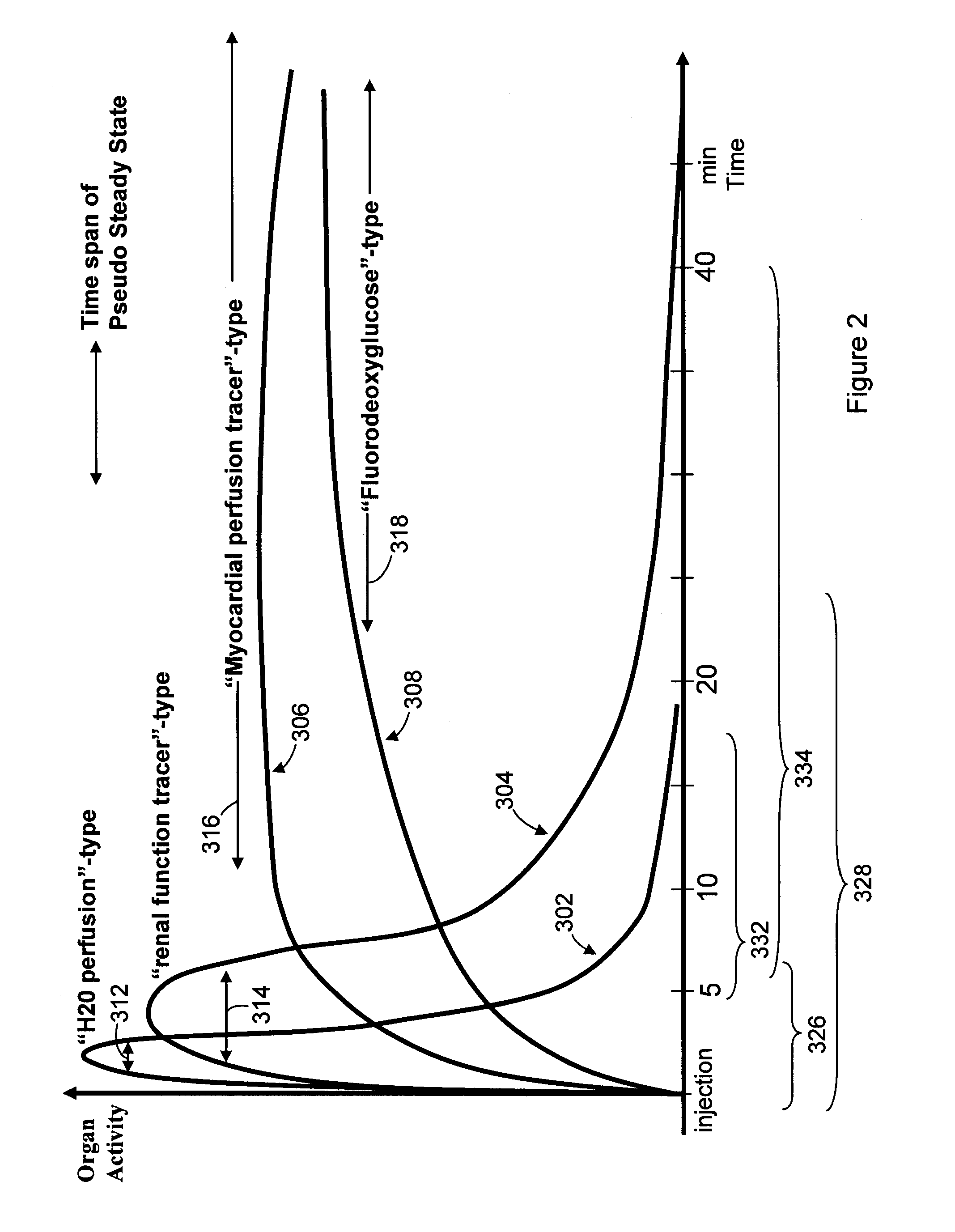Method & system for multi-modality imaging of sequentially obtained pseudo-steady state data
a multi-modality, pseudo-steady state technology, applied in the field of multi-modality imaging systems, protocols and methods, can solve the problems of high installation cost, limited flexibility of the imaging system, and inability to fully integrate the imaging system
- Summary
- Abstract
- Description
- Claims
- Application Information
AI Technical Summary
Problems solved by technology
Method used
Image
Examples
Embodiment Construction
[0021]Certain terms and phrases used throughout the present application shall be interpreted consistent with the explanations set forth herein.
[0022]The term “physiologic structure,” as used throughout, shall include any structure within a human or animal, such as bone, vasculature, nerves, an organ, a group of organs, or a portion of an organ, or a tumor, as well as any system or portion of a system within a human or animal. By way of example only, the physiologic structure may include all or a portion of the heart, brain, blood-brain barrier, lungs, liver, kidneys, lymph nodes, thyroid, stomach, thorax, neck, intestines, colon and the like. As a further example, the physiologic structure may include the pulmonary system, the nervous system, the vascular system, the blood pool, the renal system, the digestive system and any other system within an animal or human. The term “region of interest” or “ROI.” as used throughout, shall include all or any portion of one or more physiologic ...
PUM
 Login to View More
Login to View More Abstract
Description
Claims
Application Information
 Login to View More
Login to View More - R&D
- Intellectual Property
- Life Sciences
- Materials
- Tech Scout
- Unparalleled Data Quality
- Higher Quality Content
- 60% Fewer Hallucinations
Browse by: Latest US Patents, China's latest patents, Technical Efficacy Thesaurus, Application Domain, Technology Topic, Popular Technical Reports.
© 2025 PatSnap. All rights reserved.Legal|Privacy policy|Modern Slavery Act Transparency Statement|Sitemap|About US| Contact US: help@patsnap.com



